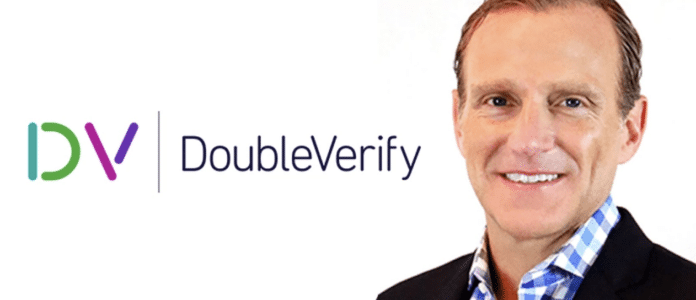Affiliate marketing is a lucrative and growing industry, but as its popularity grows, so too has the problem of fraud in the industry. In recent years, affiliate fraud rates have nearly doubled, with the most common scams including fraudulent leads, click spam, spoof traffic, URL hijacking, and paid affiliate programs.
As the president of Phonexa, a company that offers performance marketing solutions, I have a wealth of experience working with affiliate marketers. In this article, I’ll share ten essential strategies for preventing affiliate fraud and protecting your program.
Thoroughly Evaluate New Affiliates
Effective fraud prevention starts with a thorough understanding of new affiliates joining your program. Careful evaluation of new members can help you identify potential fraud and prevent it from affecting the performance of your program and damaging your brand’s reputation.
Red flags to watch for include:
An email address that doesn’t match the affiliate’s website URL, indicating a lack of transparency.
Failure to respond to emails or requests for communication.
Marketing and selling a diverse range of products, which may indicate fraudulent activity.
A sudden surge in chargebacks, which is a common scam for fraudulent affiliates.
Clearly Define Your Terms and Conditions
To eliminate confusion and make your expectations clear, it’s essential to transparently outline the terms and conditions for joining your affiliate program. Your terms and conditions should define the types of traffic prohibited by your program and establish a zero-tolerance environment for fraudulent practices.
Cloak and Monitor Affiliate Links
Cloaking your affiliate links by shortening the URLs can make tracking easier, conceal the unique ID each affiliate uses, and protect from URL hijacking. Monitoring your links can help you identify click spam and other forms of affiliate fraud.
Develop a Long-Term Fraud Mitigation Plan
To protect your affiliate program from potential fraud, you must develop a long-term risk mitigation plan. Strategies to include in your plan may include:
Fortifying your data security with additional authentication measures, encryption, and a secure data management system.
Implementing marketing tools and platforms that detect suspicious activity and behavior.
Ensuring all affiliates adhere to regulatory compliance and consumer protection laws.
Monitor Conversions
Monitoring conversions can help you identify any significant increases, which may indicate transaction fraud or click spam. Keeping an eye on conversions can help you detect fraud early on and prevent it from affecting your program’s performance.
Use Due Diligence Questionnaires and Reviews
Due diligence questionnaires and performance reviews can provide valuable insight into new affiliates and help you assess their performance. Regularly reviewing affiliate performance can help you identify any issues or red flags that may indicate fraud.
Conduct Background Checks
Conducting background checks on new affiliates can help you identify any criminal or fraudulent activity that may indicate a risk to your program. Background checks can be an effective tool for deterring fraud, but they should be used in conjunction with other strategies for maximum effect.
Encrypt Sensitive Data
Ensuring sensitive data is encrypted and stored securely can help protect against data breaches and other security threats. Encryption is a critical component of any fraud mitigation plan and can help keep your program and affiliates safe.
Utilize fraud detection technology.
One of the best ways to prevent affiliate fraud is to use technology designed specifically for this purpose. Fraud detection software can help you identify and prevent fraudulent activity in real-time. With the ability to track clicks, impressions, and conversions, fraud detection software can provide a comprehensive view of the performance of each affiliate in your program.
Set clear performance targets and KPIs.
Another way to prevent affiliate fraud is to set clear performance targets and KPIs for your affiliates. By setting targets and KPIs, you can effectively monitor the performance of each affiliate and detect any instances of fraudulent activity. Furthermore, by having clear performance targets, affiliates are motivated to work harder to achieve them, making it less likely that they will resort to fraudulent activities.
Monitor your affiliate networks closely.
The affiliate networks you work with are an important aspect of your affiliate marketing program. Regularly monitoring your affiliate networks is critical to identify any fraudulent activities and prevent them from impacting your program. This can involve reviewing affiliate behavior and performance, tracking conversion rates, and monitoring click patterns to detect any suspicious activities.
Implement strict commission payment policies.
Another way to prevent affiliate fraud is to implement strict commission payment policies. This can include verifying all transactions, reviewing conversions, and conducting regular audits of all affiliates. By having a strict commission payment policy in place, you can ensure that you only pay commissions for legitimate sales, thereby reducing the risk of fraudulent activities.
Educate your affiliates on fraud prevention.
Preventing affiliate fraud is not only about identifying and blocking fraudsters, but also about educating your affiliates on how to avoid fraudulent activities. By educating your affiliates, you can help them understand what constitutes fraudulent activities and the consequences of engaging in such activities. This can help you create a culture of honesty and transparency within your affiliate program.
Encourage transparency and open communication with your affiliates.
Finally, you can prevent affiliate fraud by fostering transparency and open communication with your affiliates. By having an open line of communication, affiliates are more likely to bring to your attention any suspicious activities they encounter. Furthermore, transparency and open communication can help build trust and create a positive working relationship between you and your affiliates.
Fraud is a continuing issue in the affiliate marketing industry, but there are ways to mitigate its impact. By conducting a thorough evaluation of new affiliates, clearly defining terms and conditions, cloaking and monitoring affiliate links, utilizing fraud detection technology, setting performance targets, monitoring affiliate networks, implementing strict commission payment policies, educating affiliates, and encouraging transparency, you can prevent affiliate fraud and ensure the success of your affiliate marketing program.





















